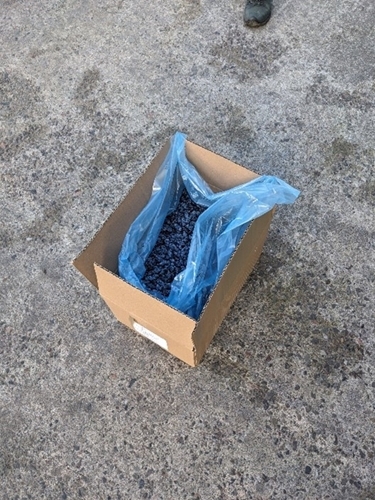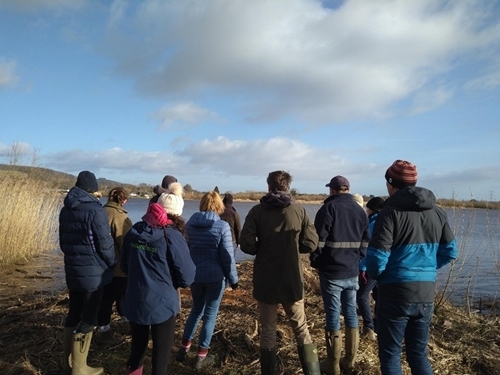By Fiona Torrance, Farmland Biodiversity Manager and Project Leader for the PepsiCo FAB project
The latest PepsiCo FAB group farm walk took place on a chilly Tuesday, with plenty of sun to counter the brisk wind at Easter Rhynd farm in Perthshire. This was the third meeting of the group, and followed the two successful farm walks held last year. These events are great for learning about novel practices the farmers have tried, with innovative wild bird seed mixes and cover crops featuring at the first two meetings.
As one of the PepsiCo FAB pilot farms, Easter Rhynd is currently working with the project team to demonstrate how productive farming does not need to suffer when measures for biodiversity are introduced. Each of the farms in the project is slightly different, which provides some brilliant assets to learn from. At Easter Rhynd, adaptability was the order of the day, and it’s fair to say everyone learned something new during the morning.
We kicked off with a short introduction to the farm. Easter Rhynd, located in Perthshire, is a predominantly arable farm specialising in cereal production, and has been farmed by the family since 1896. Sandwiched between the rivers Tay and Earn, you’d be forgiven for thinking that the land can be difficult to farm, and you’d be right. The wet autumn and winter that the East of Scotland has endured has led to many hectares of winter crops going unsown, with prospects not looking much better for spring at the time of writing. With climate change an ever-looming problem, many farmers are looking for ways to increase their metaphorical ‘baskets’ and Easter Rhynd is no different.
 The honeyberries are frozen before being sent to retailers. Credit: Bella Allan
The honeyberries are frozen before being sent to retailers. Credit: Bella Allan
With discussions about the poor weather drawing to a close, it was the perfect opportunity to move onto a new crop the farm has been trialling over the last few years. Honeyberries, a honeysuckle plant originating from Japan, is a new enterprise set up by a local group of farmers, who were keen to trial this new product in the harsh environment of Scotland after hearing about their potential health benefits. This has not been without risk, and some varieties have had to be scrapped, but the results are promising, with discussions currently being held with national retailers. The farmer, Finn, also explained how they also have established additional measures for pollinators, planting supplementary tree species for the benefits of bees and other wildlife.
After viewing the orchard, we then moved to a quiet spot by the river Tay. Rivers are a great habitat for biodiversity (the Tay reed beds are the largest of their type in the UK) but they also act as a buffer, which reduces chemicals such as pesticides and fertilisers running into the river itself. It was also a great opportunity to discuss EFGs (Environmental Farmer Groups), large groups of clusters based on river catchment areas. Although this concept is still in its infancy in Scotland, examples from south of the border have shown that they can have the potential to made differences for the environment and farmers on a large scale. With the Tay being Scotland’s largest river system, an EFG based on its catchment has the potential to be complicated, as well as delivering large-scale change, and we heard from NatureScot that there are other examples emerging such as with the Leven.
 Discussing the benefits of reed beds and rivers. Credit: Rachael Hustler
Discussing the benefits of reed beds and rivers. Credit: Rachael Hustler
Our final stop was to look at a range of wild bird and species mixes being trialled in one the fields under the advice of King Crops to discuss their benefits. With the event being held between the 2-18 February, we couldn’t run a GWCT farm walk without mentioning the Big Farmland Bird Count. With around 75% of Scotland’s land used for agriculture, monitoring our farmland birds is a key tool to ensure we protect them for the future. With surveys only taking 30 minutes, they’re a great opportunity to get out and see the wildlife using your farm and let our scientists know how it is faring. If you would like to take part or find out more information, please see the website.